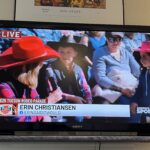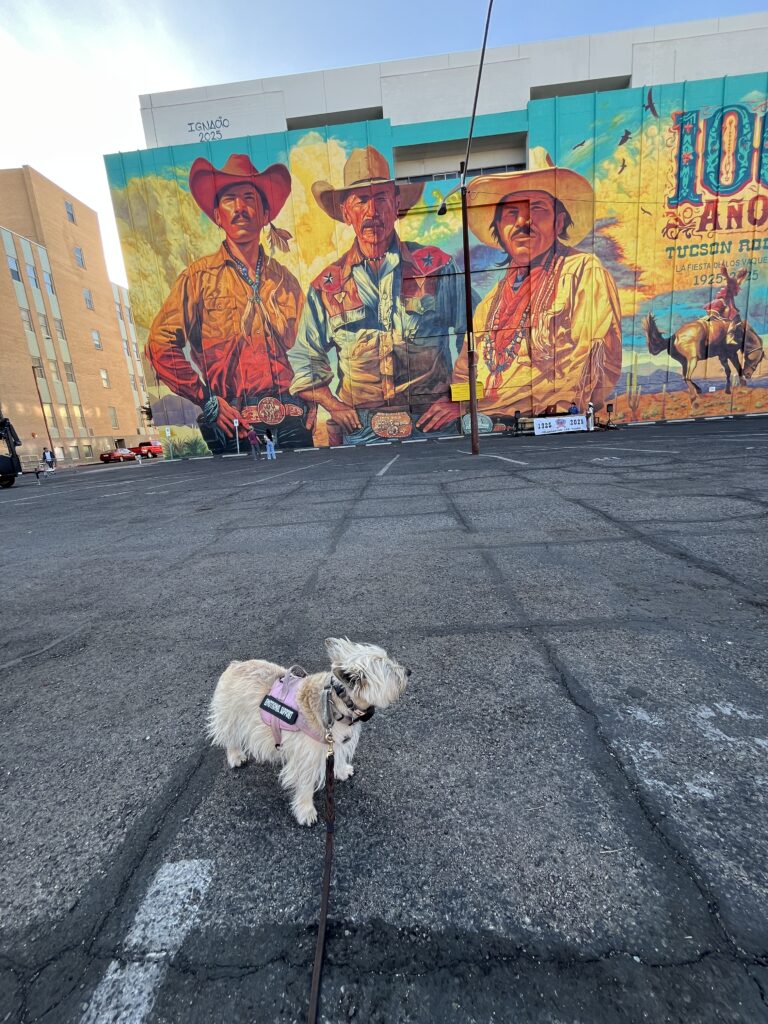Every February, usually the last Thursday and Friday of the month was rodeo break from school. It was our week to dress up in boots and pearl button shirts and cowboy hats.
And the big event was the parade.
The La Fiesta de Los Vaqueros rodeo parade is the longest, non-mechanized parade in the world. While the route has changed since the first one in 1925, the tradition and intent remain the same: this is a unique Tucson event.
 The parade now winds around the streets adjacent to the rodeo grounds in the south part of the city. When I was a kid it would wind its way through the streets of downtown and end at the rodeo grounds. Wagonloads of kids, realtors and city officials, deputies on horseback and marching bands made up the stream of entries. It was (and still is) covered by local television.
The parade now winds around the streets adjacent to the rodeo grounds in the south part of the city. When I was a kid it would wind its way through the streets of downtown and end at the rodeo grounds. Wagonloads of kids, realtors and city officials, deputies on horseback and marching bands made up the stream of entries. It was (and still is) covered by local television.
My memories of the parade are of us sitting in the window of my dad’s Scott Street or Stone Avenue pharmacies and peering out the window over the sidewalk filled with spectators at the horses and musicians. It was a way to spend a morning at my dad’s store with him and also partake in this huge local tradition.
Parades aren’t that big of a deal anymore. I can count on one hand the times I took my own boys to a parade. But those times, like those February mornings in the 1960s, are among my most precious.
Then there was the rodeo itself. Professional riders in a series of elimination events over the long weekend. it all culminated in a performance on Sunday afternoon, capped by the bull riding event. Those we always the toughest cowboys.
The Rodeo (with a capital R) is a big part of the fabric of Tucson. Glad to be around it again.
Relentless

